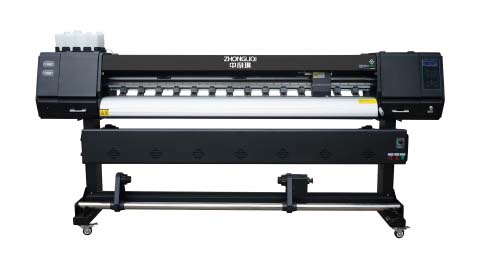
To judge the quality of the printer chip, you can start from the following aspects:
1. Appearance inspection:
• Package quality: The package of a high-quality printer chip should be complete, fine, and without obvious defects. If the chip package is damaged, cracked, deformed, or there are gaps, bubbles, etc. at the junction of the packaging material and the pin, it may affect the performance and service life of the chip, and may even be a counterfeit product. For example, the package edges of regular chips are neat and well sealed, while the package of inferior chips may have uneven edges and glue overflow.
• Pin condition: Check whether the pins of the chip are straight and neat, and whether they are bent, broken, oxidized or rusted. The pins are the key part of the connection between the chip and the printer circuit. The quality of the pins will cause poor signal transmission and affect the normal operation of the printer. If there is an obvious oxide layer on the surface of the pins, it will increase the contact resistance, resulting in signal attenuation or transmission errors.
• Identification information: Check whether the logo on the chip is clear and accurate. Regular chips will have detailed information such as model, batch number, production date, etc., with clear and standardized fonts. If the logo is blurred, the handwriting is unclear, or the information is incomplete, it may be a counterfeit or poor quality chip.
2. Performance test:
• Functional compatibility: Install the chip into the printer and check whether the printer can recognize the chip normally and whether all functions are normal. For example, after installing the chip, can the printer correctly read the information of the ink cartridge or toner cartridge, and can it print, copy, scan and other operations normally. If the chip is incompatible with the printer, there may be problems such as printer errors, failure to recognize consumables, and abnormal printing quality.
• Printing effect: Check the printing effect of the chip by printing a test page or actually printing a file. A high-quality chip can ensure that the printed text is clear, the image is complete, the color is accurate, and the printing speed is stable. If the printed text is blurred, missing characters, or ink is broken, or the image has stripes, color deviation and other problems, it may be that the chip is of poor quality or does not match the printer well.
• Data transmission stability: During the printing process, observe whether the data transmission of the printer is stable. If the data transmission of the chip is unstable, it may cause printing interruption, data loss, slow printing speed and other problems. The data transmission stability of the chip can be checked by printing a large number of files continuously or performing a long printing test.
3. Electrical characteristics detection:
• Resistance measurement: Use a multimeter or other tool to measure the resistance value between the pins of the chip. Under normal circumstances, the resistance value between the pins of the chip should be within a certain range. If the resistance value is too large or too small, there may be problems such as open circuit or short circuit inside the chip. It should be noted that the resistance values of different types of chips may be different, so before measuring, it is necessary to refer to the chip's data sheet or understand the normal resistance value range.
• Voltage measurement: When the chip is working, measure whether the voltage value of each pin is in the normal operating voltage range. If the voltage value is abnormal, there may be a problem with the chip's power supply circuit, or the chip itself has a fault. For example, if the voltage of the chip's power pin is too low or too high, it will affect the normal operation of the chip.
4. Reliability verification:
• High temperature test: Place the chip in a high temperature environment (such as 70℃-80℃) for a period of time (several hours or longer), and then check whether the chip's performance is affected. High temperature testing can test the stability and reliability of the chip in a high temperature environment. If the chip fails or its performance degrades under high temperature, it means that its quality may not be up to standard.
• Aging test: The chip is tested for long-term continuous operation to simulate its performance during long-term use. After a long period of aging testing, if the chip can still maintain stable performance, it means that its reliability is high; conversely, if the chip fails or its performance degrades significantly, it means that there is a problem with its quality.
5. Brand and channel:
• Brand reputation: Choose printer chips from well-known brands. These brands usually have high standards and strict requirements in quality control and product development, and their product quality is more guaranteed. You can understand the brand's reputation by checking the brand's reputation, market share, user reviews and other information.
• Purchasing channel: Purchase printer chips from regular channels, such as officially authorized dealers, professional electronic component markets or reliable e-commerce platforms. Avoid purchasing chips from channels with unknown sources to avoid purchasing counterfeit and shoddy products.